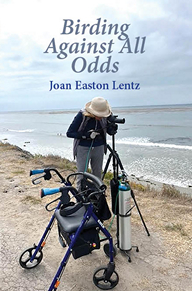February 6, 2014 – NATURE JOURNAL
Counting Birds: What is Citizen Science telling us?
Last week I got a call from my friend Melinda Burns, a fine local freelance journalist. She wanted to know if there was any connection between the Santa Barbara Audubon Society’s recent Christmas Bird Count results and the current drought conditions in our region. She ended up writing a wonderful article in the online journal “Mission & State” which you can read here: http://www.missionandstate.org/features/wild-things/
She also wanted to know what I thought about Citizen Science — wherein volunteers census populations of insects, birds, and mammals in the wild.
Second question first: I think volunteer Citizen Science efforts are enormously helpful to scientists, who can’t be everywhere, and who need the input of informed helpers to “see what’s out there.” The combined efforts of Christmas Bird Counts, Breeding Bird Surveys, and The Great Backyard Bird Counts, to name a few, have enabled ornithologists to track trends in bird populations over time.
The key word here is TIME. We need years and years of data to map trends in bird populations.
In Santa Barbara, another friend, Mark Holmgren (former UCSB Biology Dept. staffer), has compared data from the CBCs of 1903-1940 era with those of the 1962-2012 period (our local Audubon chapter wasn’t active between 1940 to 1962, so those years are missing.)
What species showed the greatest declines? Not surprisingly — the DUCKS. Our wetlands are vulnerable, and these species are threatened on their breeding grounds elsewhere. The figures below are AVERAGES from the early and late comparison periods:
Northern Pintail: 437 vs. 183
Northern Shoveler: 411 vs. 207
Canvasback: 83 vs. 31
White-winged Scoter: 51 vs. 16
These figures are interesting, because they span the years from when the Bird Count was very small, to the present size of over 275 participants. Other species that have declined within the Count circle, according to Mark’s analysis, are Mountain Quail, Yellow-billed Magpie, Horned Lark, and White-throated Swift.
Melinda Burns queried Rebecca Coulter, chief compiler of the CBC, and she echoed what many of us felt: “my area on the Count was like a tomb.”
So how do we explain the 222 total number of KINDS of birds seen — the species total — as being the second highest ever recorded? Was that balmy, dry, warm Count Day (typical of the drought) helping us to get all those different birds recorded? The numbers of INDIVIDUALS were only down 10% from last year’s. And the lowest number of individual birds in the last decade was achieved on the rainy Count Day in 2005, certainly not a drought year.
So you see there are many factors — an important one being WEATHER ON COUNT DAY — that affect Christmas Bird Count totals!
Throw in increasing urbanization, overly-groomed gardens, and a dearth of blossoms on many Eucalyptus trees and you might end up wondering whether you can even begin to draw any conclusions, much less spot trends.
Citizen science is here to stay. It’s an invaluable tool for ornithology and other disciplines.
But spotting trends is much more difficult than spotting birds.
I think I’ll just go birding and let the experts analyze the data!
For more on historical CBC results go here: http://casbbirdcount.org/ and click on “Historical Since 1991”.

